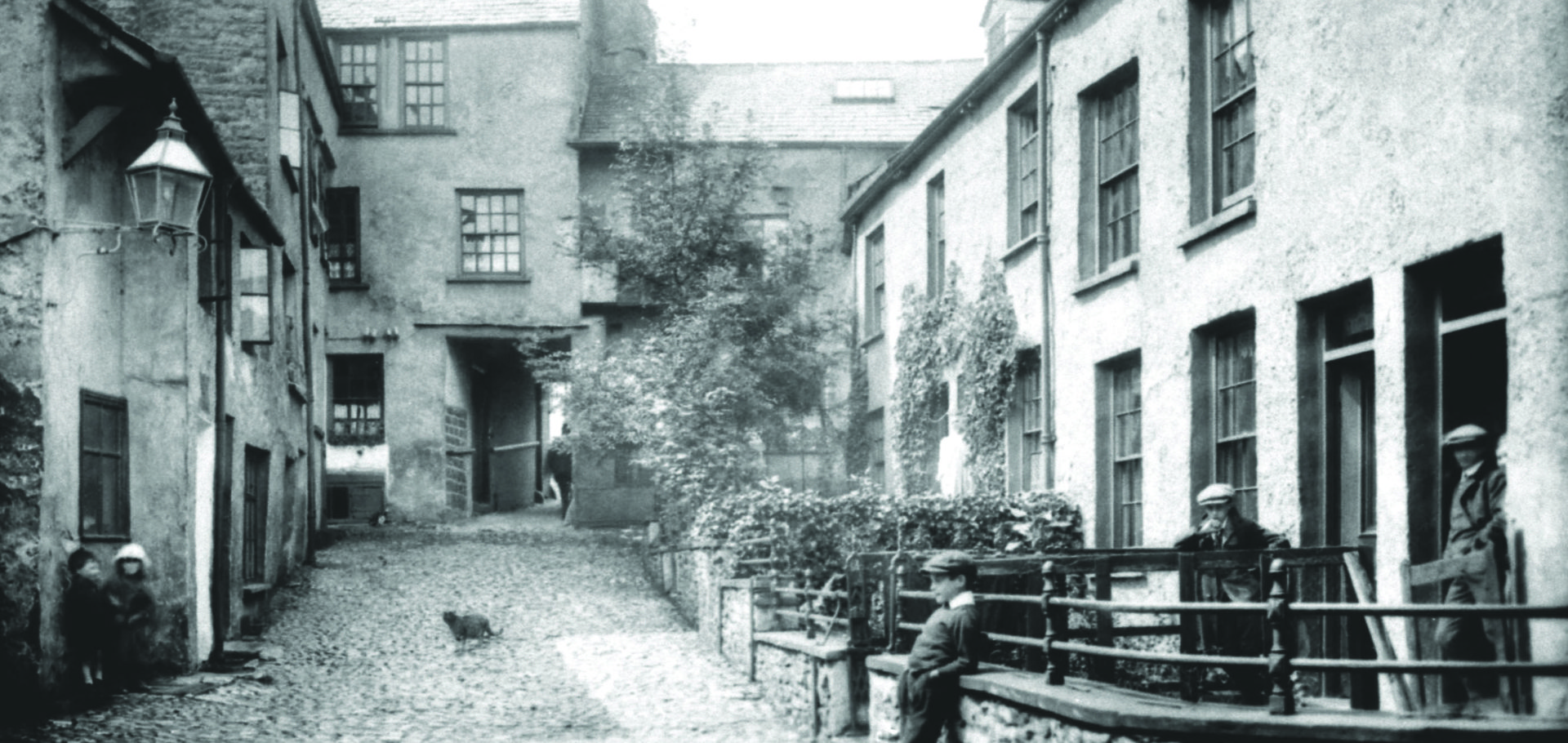Preview: Yards
of Industry
Kendal’s ancient yards still shape the town today but where did they come from and what were they for? Giles Brown finds out in a new exhibition
Kendal’s yards are so deeply established in the fabric of the town that the residents could be forgiven for passing through them without paying them much thought. But these long, narrow, enclosed areas – which branch off the town’s main thoroughfares – are artefacts of a social history stretching back nearly 1,000 years.
The story of Kendal’s yards is currently being told in Yards of Industry, an exhibition at the town’s Museum of Lakeland Life and Industry.
“It’s really obvious when you walk around Kendal – they are really central to how it is laid out,” says curator Dr Rachel Roberts, who explains that while it was relatively common for other towns and cities to have similar spaces they have often been lost over time due to development or wartime bombing.
The yards began to take shape in the 11th century when tenants were granted tracts of land by the local baron, with most choosing to build a house at one end of the plot and rent the rest out.
In the 18th century, as demand grew for labour in industries like the wool trade, Kendal’s population expanded and the yards began to fill with stone buildings, homes to people and scores of businesses and industries.
Among the traders who operated in the yards were the butchers of the New Shambles, who slaughtered animals in the centre of the town, sold the meat and relied mostly on rainwater to wash the waste away. Another smelly trade practiced in the aptly named Tanner’s Yard was leather making, an activity that was well suited to the yard’s position running from the road down to the River Kent.
“It was really devastating to the rivers and the people who were using them because they were using things like pits full of urine and pits full of toxic chemicals,” says Roberts.
“They were definitely responsible for killing pretty much everything in the river on several occasions, as well as several people.”
But although some yards had specific industries associated with them, most of them – there are thought to have been up to 150 – were a hotchpotch of businesses and homes, with as many as 136 people living in 30 tiny cottages.
“Obviously you have got people crammed together – it could be 12 people in a cottage – and conditions were generally quite bad. Pandemics would just devastate whole communities and spread like wildfire.
“They would generally just be using one toilet between about 100 or 150 people. They had one or two taps, but when they froze or broke there were no funds to fix them and then they started going to the river. Then they were in real trouble.”
However, the yards had their benefits, not least a strong sense of community.
“Life in the country could be very isolating, but in the yards you weren’t isolated and there was always someone you could talk to.
“It was a place where ideas could be passed around relatively easily and people could organise politically.”
Roberts believes the yard owners’ practice of putting gates across the entrance and locking them may have been an effort to stop the workers getting together to organise and rebel against the unsanitary conditions.
Today, although the conditions are much improved, Kendal’s yards are still a home for people and businesses and a walk into one of these historic places gives a flavour of what life was like for 18th century Kendalians.

Leave a reply
Your email address will not be published.